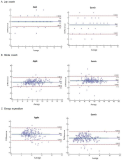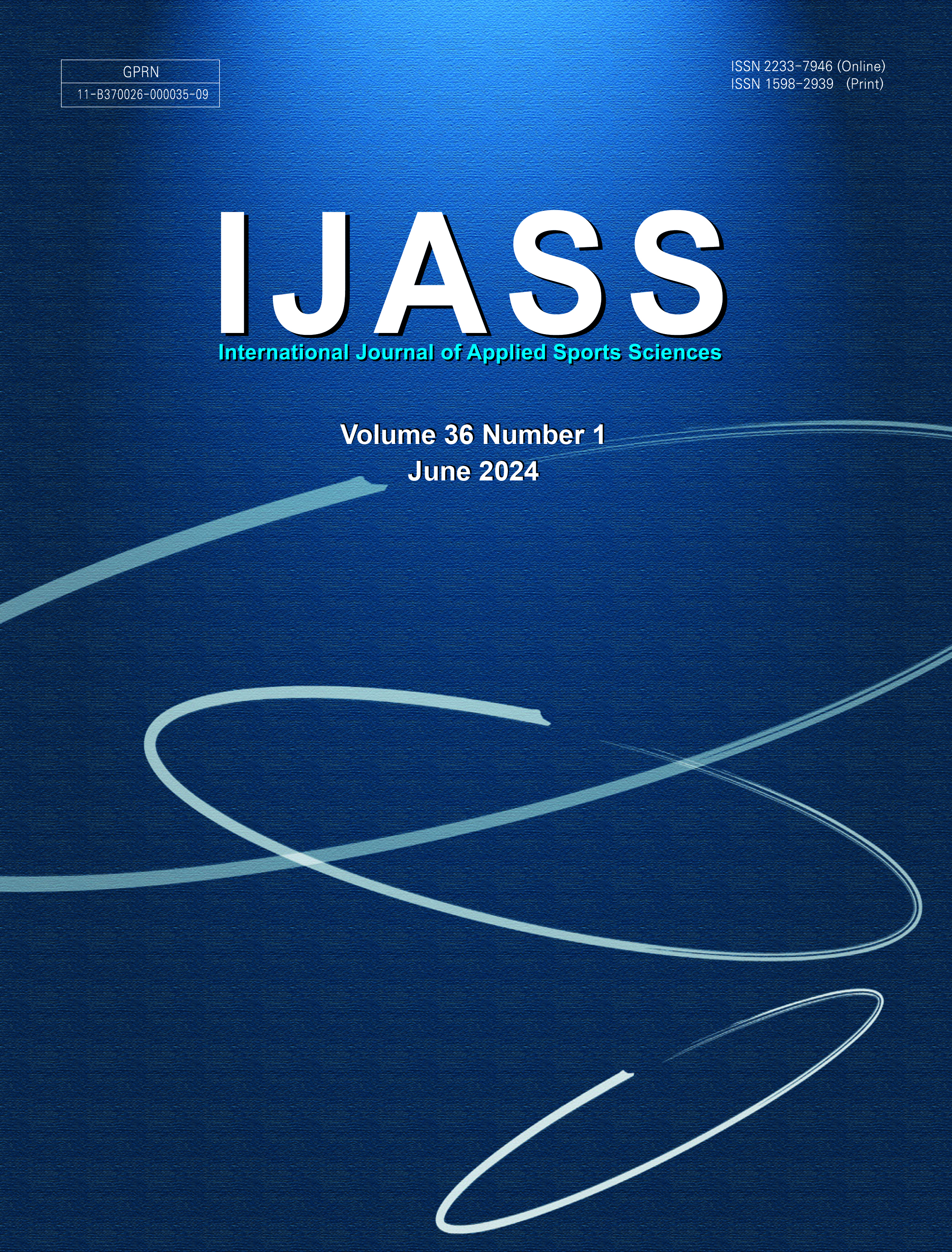 ISSN : 1598-2939
ISSN : 1598-2939
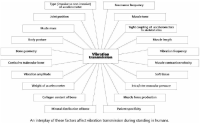
There is a lack of consensus on the effects of vibration therapy on bone outcome measures. Vibration is a mechanical stimulus and can produce mechanical loading on bone. Similar to site-specific effects of mechanical loading on bone, vibration therapy can also produce site-specific effects. Notably, skeletal effects of vibration therapy could depend on the degree of vibration signal that is received by respective skeletal sites. Thus, vibration transmissibility can dictate, in part, effects of vibration therapy on bone outcome measures. Factors at various levels such as the type of vibration, type of population receiving vibration, and their interaction could affect vibration transmission. In addition, vibration amplitude, vibration frequency, joint position, body posture, resonance frequency of skeletal sites, tissue composition of human body including bone geometry can affect vibration transmission across the human body. The main aim of this review is to summarize the published evidence of various factors that affect vibration transmission which will help to inform future evidence based vibration therapy protocols for skeletal rehabilitation in various populations.

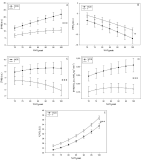
This study aimed to compare deoxygenation in the vastus lateralis in the skeletal muscle microvasculature of nine world-class/elite (WC/E) vs. thirty-one well-trained/trained (T) cyclists by near infrared spectroscopy (NIRS) during a maximal aerobic power (MAP) test. Interaction analysis showed that 1st degree polynomial trends across % peak oxygen consumption (%VO2peak) differed significantly between WC/E and T cyclists on deoxygenated hemoglobin-myoglobin (Δ[HHb]) and on total hemoglobin-myoglobin (Δ[THb]) from 70 to 100% of VO2peak. These results show that the linear slopes of these trends were different. Near-plateau of Δ[HHb] was observed in T cyclists, whereas a consistent increase up to VO2peak was seen in WC/E cyclists. The Δ[THb] curve declined in T cyclists suggesting that blood volume in the vastus lateralis microcirculation decreases from 70 to 100% of VO2peak whereas it increases slowly but continuously to 95% of VO2peak in WC/E cyclists. The results of this study showed that deoxygenation in the vastus lateralis increases consistently up to VO2peak in WC/E cyclists and seems to be influenced by blood volume in the microcirculation.


Introduction This study examined physical activity (PA) participation rates and the role of PA in the modification of cardiovascular disease (CVD) risk factors according to types of PA in elderly Korean women using data from 2007 to 2012 from a nationally representative South Korean database. Materials and Method In total, 3,456 elderly women aged ≥65 years, without CVD, were included in the study. CVD risk was evaluated using both the 10-year Framingham risk score (FRS) and atherogenic index (AI), as well as well-known CVD risk factors such as hypertension, diabetes mellitus, smoking, and hypercholesterolemia. Results The PA participation rates were 4.7%, 33.9%, and 61.4% for the regular PA, regular walking, and no PA groups, respectively. Multiple linear regression analyses revealed that regular PA and regular walking were associated with a favorable lipid profile and lower AI, after controlling for socio-demographic factors and types of PA. PA did not significantly affect the FRS. Conclusion This study suggests that regular PA and walking are important in the modification of CVD risk factors among elderly Korean women.

The aim of the study is to investigate the relationships between Olympic values, sport involvement, and prosocial behaviour in South Korean youth. This study utilised a quantitative research method employing a self-administrated questionnaire and purposive sampling with 264 students (143 boys and 121 girls with ages between 9 and 13), and 142 of the students participated in the South Korean Olympic values education programme (K-OVEP). The results indicated that there were significantly higher mean values for only secondary sport involvement by the K-OVEP participants than non-participants. In addition, multiple regression analyses revealed that Olympic values positively impacted sport involvement and prosocial behaviour in South Korean youth. Sport involvement also was a predictor of prosocial behaviour.

Background Several studies have recently shown that high-intensity interval training (HIIT) is superior to moderate-intensity continuous exercise (MICE) for improvements on endothelial in patients with cardiovascular disease. However, little is known about its effects on changes in blood pressure, especially in hypertensive patients. Purpose To compare the effects of HIIT and MICE on changes in blood pressure reduction and endothelial function in hypertensive patients. Methods Fourteen hypertensive patients, aged 52.1±7.6, participated in this study. They tapered off their medications, if necessary, and were randomized to either HIIT (n = 7) or CME (n = 7) group. HIIT was composed of 5 sets of 3 min exercise at 80% HRR, and each interval was separated by 3 min recovery at 40% HRR. MICE was composed of 35 min exercise at 60% HRR. Both groups were designed to use same energy expenditure, and performed exercise 5 days/week for 4 weeks. Endothelial function was determined by assessing endothelial progenitor cells (EPCs) using flow cytometry and flow mediated dilation (FMD) using ultrasonography. Blood pressure (BP) and heart rate (HR) were measured at rest by using automatic blood pressure monitor. Repeated ANOVA was performed to analyze if the changes in dependent variables after training are different between HITT and MICE group. Statistical significance was at p< .05. Results There was a significant interaction in resting HR, but not in BP, FMD, and EPCs between groups after training. Systolic BP was significantly decreased in both HITT group (p = .012) and MICE group (p = .048) after training. However, diastolic BP and FMD was significantly decreased (p = .021) and increased (p = .049) in only HIIT group, respectively. EPCs were not significantly changed after training in both HIIT and MICE group. Conclusion The results of this study indicate that there is no big difference in HIIT and MICE for BP reduction, and HIIT and MICE are both effective for BP reduction in hypertensive patients. However, further researches are needed to illuminate differential effects of HIIT and MICE on BP response and endothelial function.



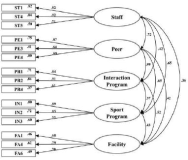
In Germany, the national initiative titled ‘Integration through Sport’ has been implemented to encourage migrants to participate in sport clubs that provide a range of activities and help build mutual relationships. In spite of this effort, the number of migrants in the clubs has continued to decrease rapidly over the past decade. Successful implementation of the program requires practitioners and operators to understand which experience quality elements actually encourage migrants to participate in the activities offered and can help the clubs in retaining them as members. Thus, the aim of this research was (1) to conceptualize the notion of sport club experience quality for migrants (SCEQM) and (2) to develop a valid and reliable instrument to measure the SCEQM. Consequently, 15 items in five factors were developed: staff, peers, sport program, interaction program, and facility. The result of confirmative factor analysis indicated that the data fit the model well.


With the recent installation of waterproof function on wearable watches, various sports activities including walking, running and even swimming are monitored. Commercially available swimming wearable watches automatically identified stroke type, swim distance, stroke counts and energy expenditure (EE). Although the accuracy of estimating EE of walking, bilking and activities of daily life on activity monitors have been evaluated, it has not been examined for swimming. Thus, the purpose of the study was to evaluate the accuracy of estimating EE for swimming wearable watches (Apple Watch S2, Apple and Garmin Finex 3HR, Garmin). A total of 78 swimmers aged 20-59 years (female: 48%) participated in the study. All the participants wore Apple and Garmin and completed a set of swimming protocol comprising various speeds (0.4, 0.6, 0.8, 1.0, 1.2 m/s). At each swimming speed they were asked to swim for four minutes. Lap counts, stroke counts and energy expenditure (EE) from the Apple and Garmin were evaluated with the criterion measures. Lap counts and stroke counts were directly counted by the research assistant. The portable respiratory gas analyzer (K4b2, Cosmed, Italy) and a swimming snorkel (Aqua Trainer Snorkel, Cosmed, Italy) was used as the criterion measure of EE. The mean absolute percentage error (MAPE) of lap counting and stroke counts at various swimming speed were within 10% for Apple (lap counts: 0.5-6.1%, stroke counts: 6.2-9.3%) and about 20% for Garmin (lap counts: 0-20.6%, stroke counts: 6.8-17.6%). However, the MAPE of EE was higher for Apple (17.1%-151.7%) than for Garmin (17.9%-32.7%). The accuracy of estimating EE tended to improve with increasing swimming speed for both Apple and Garmin. The EEs from Apple were outside the equivalence zone except for at 1.2 m/s and were overestimated compared to the criteria. On the other hand, EEs from Garmin were within the equivalence zone at all speeds except for 1.2 m/s. In conclusion, Apple and Garmin wearable watches accurately measure lap counts and stroke counts. However, the accuracy of estimating EE are poor at slow to medium swimming speed. Further improvement is needed to estimate energy expenditure of swimming at various speed.

